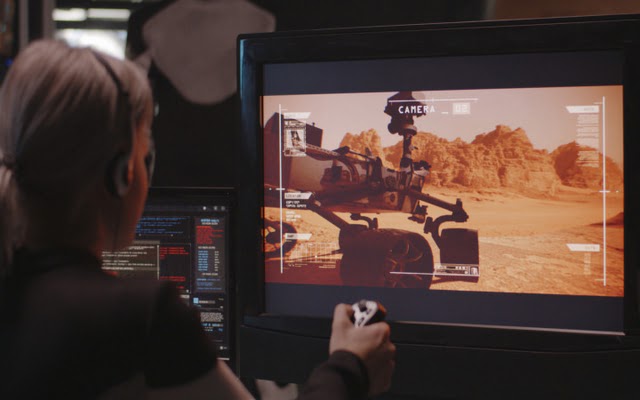Quck answer
Scientists explore the solar system through a variety of methods and technologies. They use telescopes to observe distant planets, moons, and asteroids. Robotic spacecraft are sent to explore planets and their moons up close, collecting data and images. Probes are also sent to orbit around or land on planets, such as Mars, to study their composition and atmosphere. Scientists also study meteorites that have fallen to Earth, which provide insights into the formation of the solar system. Additionally, they use computer models and simulations to better understand the dynamics of the solar system and predict future events. Overall, these approaches help scientists uncover the mysteries of our solar system.

Have you ever gazed up at the dazzling stars in the night sky? Have you ever pondered what lies beyond? Surely, your teachers have informed you about the existence of stars, planets, and entire galaxies in the vast universe.
But how do we acquire this knowledge? It’s true that humans have set foot on the Moon, but considering the enormity of the universe, the Moon is relatively close to Earth. After all, other moons and planets are millions of light-years away. How then do scientists investigate the farthest reaches of space?
Many individuals rely on technology to explore beyond our own planet. Various devices have assisted experts in peering into our galaxy and beyond. One of the earliest tools for space exploration was the telescope, which provided scientists with their first glimpse of what lies beyond Earth’s atmosphere. Telescopes utilize lenses and mirrors to extend our view beyond Earth’s boundaries.
Telescopes have yielded significant discoveries for scientists, paving the way for further space exploration. Humans have embarked on journeys to the Moon and conducted numerous space shuttle missions. They have traversed the depths of space and conducted research on a wide range of scientific subjects.
Scientists have always possessed an insatiable curiosity. The more we learn about outer space, the more we realize how much more there is to uncover. This has driven experts to develop even more advanced tools, which enable us to explore far beyond our human capabilities.
Take the telescope, for example. It is no longer restricted to Earth’s surface. In 1990, the Hubble Space Telescope was launched into outer space, where it has remained for over 30 years. It has captured images of our universe that would have been impossible to obtain otherwise.
The Hubble Telescope is a remarkable piece of technology. It is powered by sunlight and equipped with numerous cameras and scientific instruments. This telescope has provided scientists with invaluable data. According to NASA, the data obtained from the Hubble Space Telescope has been utilized in over 17,000 scientific papers!
Since the late 2000s, scientists have also conducted numerous experiments in low-Earth orbit, thanks to the International Space Station (ISS). The ISS is the first orbital space station designed for long-term visits from astronauts of various nations. Scientists hope that the ISS will serve as a stepping stone for future human missions to Mars and beyond.
Meanwhile, scientists have continued to forge ahead. They have constructed various machines to explore the deepest corners of our solar system. Probes, such as NASA’s Cassini probe, have been dispatched to investigate other planets. If you have marveled at a breathtaking image of Saturn recently, you have the Cassini probe to thank.
Astronomers have always been fascinated by Mars. Today, we possess more knowledge about the red planet than ever before. The Mars Reconnaissance Orbiter and the Mars rovers — Spirit, Opportunity, and Curiosity — are powerful robots that have greatly contributed to our understanding of Mars’ geology.
As time progresses, scientists will continue to expand their knowledge of the universe. They will employ advanced scientific technology to do so. Thanks to the Kepler telescope, launched in 2009, scientists now suspect that there may be over 3,000 planets orbiting more than 2,000 stars in the Milky Way galaxy. All of these discoveries were made possible by Kepler!
Do you have a keen interest in learning more about space? Perhaps one day, you could join the ranks of space scientists! You can start today by immersing yourself in everything there is to know about the celestial objects in our universe.
Give It a Try
Are you ready to continue your adventure? Find a daring companion, whether it’s a friend or a family member, to join you in exploring one or more of the following activities:
- Are you curious to see what space looks like with your own eyes? Take a look at these extraordinary images captured by the Hubble Space Telescope. Don’t they showcase some truly remarkable objects? Is there one in particular that piques your interest? Enlist the help of an adult to delve into research about the object you observed through the Hubble Telescope today.
- Ever wondered why we venture into space? That’s a great question! You can uncover some answers by examining these fascinating Concept Maps, a collaborative effort between the Institute for Human and Machine Cognition (IHMC) and NASA. These concept maps will aid you in exploring and comprehending the numerous reasons why humans have sought to study and travel beyond the confines of Earth. Summarize your discoveries for a friend or family member.
- Do you believe it is important to expand our knowledge of space? What are your reasons for or against? Express your thoughts in a letter or email to a friend or family member, providing compelling reasons and examples to support your stance.
Sources of Wonder
- http://www.nasa.gov/exploration/whyweexplore/why_we_explore_main.html (accessed on 26th Oct. 2020)
- http://io9.com/5975657/10-of-the-greatest-space-technologies-of-the-twenty+first-century (accessed on 26th Oct. 2020)
- https://exoplanets.nasa.gov/keplerscience/ (accessed on 26th Oct. 2020)





Leave a Reply